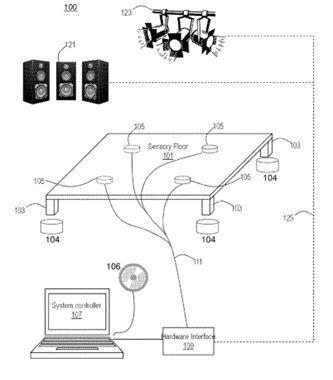When thinking about music, patents may not be the first type of IP right that springs to mind. We are all familiar with artists being sued for copyright infringement or even how some popstars have registered trademarks for the lyrics of their songs. Nonetheless, the world of music is rich with novel and inventive technological advancements. So, let's take a look at three inventions related to the world of music and concerts.
And it was all yellow
GB201113805D0 - Interactive lighting effect and wristband - Google Patents
Since 2012, Coldplay have been known for, amongst other things, Xylobands - the light-up wristbands they give to fans at their shows. These wristbands are designed to synchronously illuminate with different colours in time to music. But how do they work? Patent application WO2023/021209 has the details.
Each wristband contains an RF receiver which detects "data bursts" emitted by a transmitter. The data bursts contain instructions which tell the wristbands when to light up and with what colour. When concertgoers arrive at a venue, they are given a wristband assigned to the zone of the venue they are located in. For instance, if an attendee's ticket is for the north-west side of the venue, then they will be given a wristband that has been pre-assigned to this zone. Then, once the concert starts, the transmitter sends out data bursts containing information for all the different zones. All the wristbands receive all of the transmitted data bursts. Then, each wristband filters through the information received for the instructions relating to the zone it has been assigned to. The wristbands then light up according to the commands they receive. This enables organisers of events to coordinate complex lighting displays which can even be synchronised to music and other special effects.

It's a kind of magic
We've all been there - you're out and about and you hear a song playing. It sounds familiar, but you aren't quite sure what it's called. In the past, the song would have been stuck in your head for the rest of the day and you might never have learnt its name. Luckily, we now have Shazam or, rather, luckily we now have US patent 6990453 B2 - "system and method for recognizing sound and music signals in high noise and distortion".
As the patent explains, this music recognition works by indexing millions of known songs in a database and assigning each a collection of "fingerprints". The fingerprints are determined by analysing many small "chunks" of a song at different points in time. For each chunk, a frequency spectrum is created based on the many different frequencies in the music at the given point in time. The frequency spectrum contains information on which frequencies are present and how loud each frequency is - known as a Fourier transform.
When the system starts to identify a song being played, it carries out the same fingerprinting technique on the sample recorded, identifying the loudest frequencies for each of many small chunks. Once the fingerprints are gathered, they are compared to the fingerprints in the database of songs and the song with the highest number of matching fingerprints is selected as the correct match. The duration of and time between each chunk is carefully selected to ensure enough detail is captured without taking too long to process. Using this method, an almost real-time analysis of a song can be achieved. Simple! Or maybe not simple, but at least you'll finally know the name of that song.
I feel it in my bones
US10765959B2 - Method and apparatus for a sensory floor - Google Patents
You know the feeling when the music is so loud that you can feel it in your bones? Well US Patent 10,765,959 takes that one step further by making the ground shake beneath your feet! Using one or more vibration actuators, this "sensory floor" promises to "stimulate a person's non-auditory senses to perceive a musical performance more immersively".
The sensory floor is made up of multiple surface tiles which can be arranged at a venue to cover the desired floor space. The tiles are connected to a mixer board which acts as an interface between a performer's musical equipment and the vibration actuators.
A performer is then able to either feed their live music directly into the system to have the sensory floor respond in real time or alternatively they can play back a pre-recorded set of vibrations. The floor can be set to vibrate in time to music to "enhance enjoyment of a musical performance" and at certain frequencies the actuators in the platform can even cause a resonance in the lungs of those standing on it to heighten the feeling of being immersed in the music.

So there we have it, three music-related inventions which you might not have known about. There's a lot more to intellectual property in music than just copyrights and trademarks.
The content of this article is intended to provide a general guide to the subject matter. Specialist advice should be sought about your specific circumstances.

